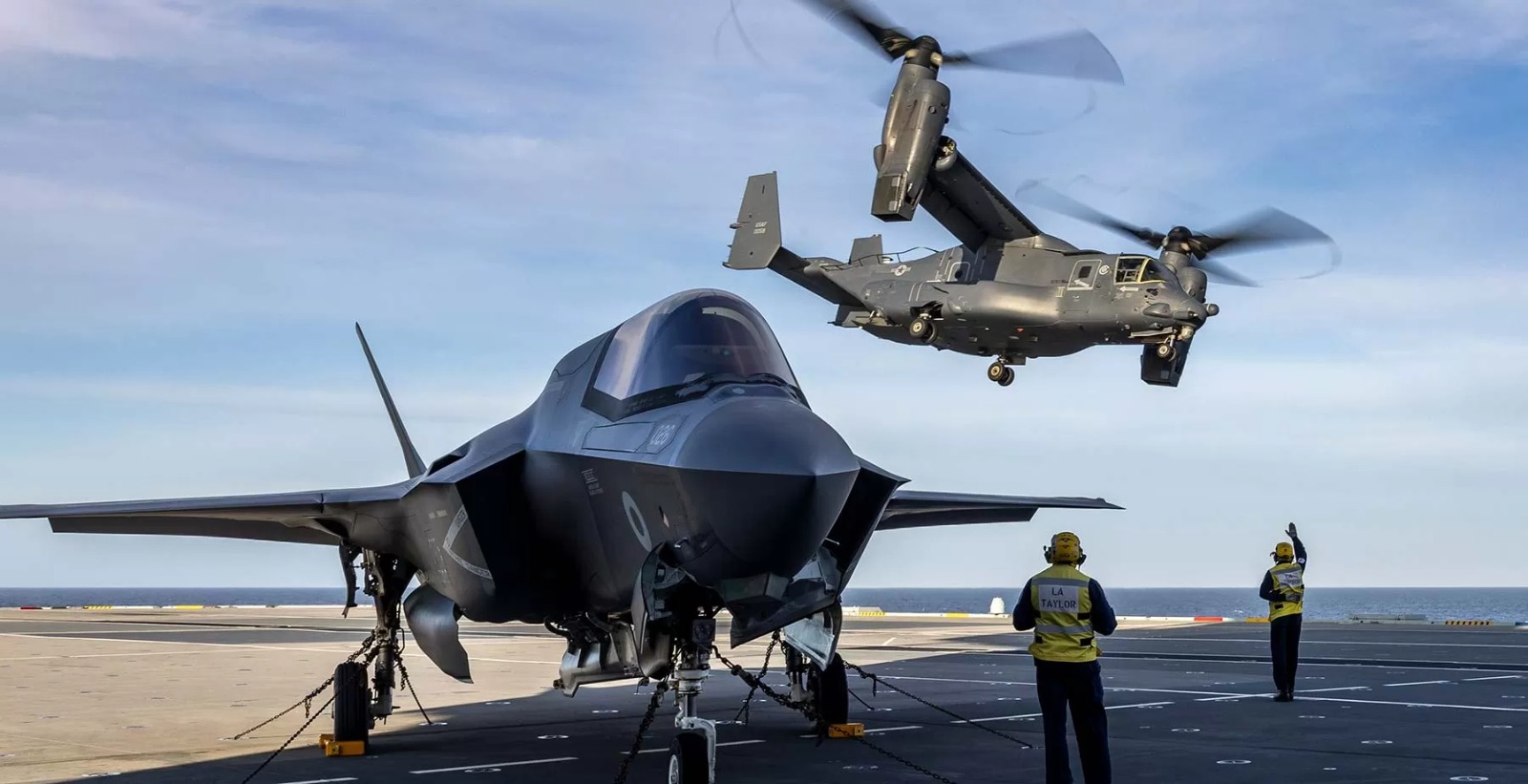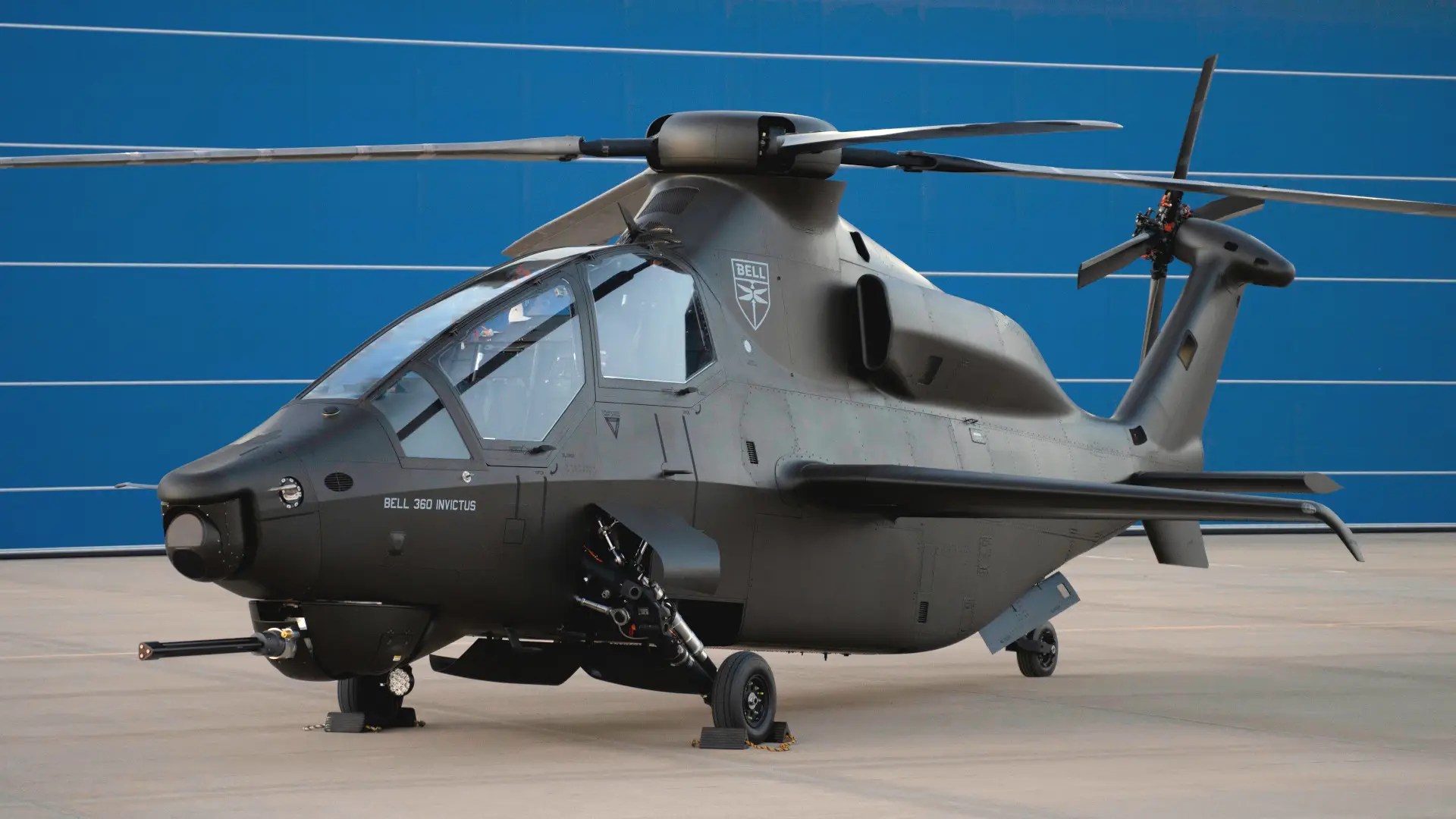In late 2022, the US Army selected Bell’s V-280 Valor tilt-rotor as its Future Long-Range Assault Aircraft (FLRAA).
It is eventually meant to replace thousands of UH-60 Black Hawk helicopters.
The US Army recently cleared the next phase of the program, engineering and manufacturing development. Meanwhile, the Army is already considering possible improvements incorporating new technologies. They plan to get the line pilots into the FLRAA by 2030.
Tilt-rotors have not seen all smooth sailing. The US Air Force’s (USAF) Bell Boeing V-22 Osprey, also used by other military branches, has had a history of accidents and safety concerns.
The fatal crash in November 2023 in Japan was caused by a catastrophic failure of the aircraft’s prop-rotor gearbox. Transmission issues called hard clutch engagement (HCE) have been associated with several deadly V-22 crashes.
As of November 2023, 16 V-22 Ospreys have been damaged beyond repair in accidents that have killed 62 people. Under these circumstances, it is interesting to look at the FLRAA program.

Tilt Rotors
A tilt-rotor is an aircraft that generates lift and propulsion by way of one or more powered rotors (sometimes called prop-rotors) mounted on rotating shafts or nacelles usually at the ends of a fixed wing. Almost all tilt-rotors use a transverse rotor design, with a few exceptions that use other multi-rotor layouts.
The tilt-rotor design combines a helicopter’s VTOL capability with the speed and range of a conventional fixed-wing aircraft. For vertical flight, the rotors are angled, so the plane of rotation is horizontal, generating lift like a normal helicopter rotor.
As the aircraft gains speed, the rotors are progressively tilted forward, with the plane of rotation eventually becoming vertical. In this mode, the rotors provide thrust as a propeller, and the aerofoil of the fixed wings takes over, providing lift via the forward motion of the entire aircraft.
US Army Abandoned FARA
The escalated work on the FLRAA upgrade is a result of the US Army terminating work on the manned Future Attack Reconnaissance Aircraft (FARA) in February 2024.
FARA would have been an armed reconnaissance helicopter as a successor to the Bell OH-58 Kiowa scout. In March 2020, the US Army selected Bell 360 Invictus and Sikorsky Raider X, a scaled-up version of the S-97 Raider.

Evolving Vertical Lift Technologies Approach
The US Army has set up a Future Vertical Lift Cross-Functional Team that is trying to imbibe new technologies. They are looking at a Modular Open Systems Approach (MOSA) so that new technologies and capabilities can be easily added.
This could mean new sensors, easier pilotage capability, advanced avionics, and expansion of launched capabilities. FLRAA will use launched effects, which are essentially small drones that shoot out of something else mid-flight to collect information or strike targets for platforms like FLRAA.
Future Long Range Assault Aircraft (FLRAA)
After reviewing FLRAA affordability, technological viability, threat projections, and security, engineering, manufacturing, sustainment, and cost risks, the Army Systems Acquisition Review Council (ASARC) in June confirmed that all sources of program risk have been adequately addressed to move to the next phase of aircraft development: the engineering and manufacturing development phase.
It is the US Army’s commitment to its highest aviation modernization priority. The FLRAA will provide assault and MEDEVAC capabilities for the future Army and significantly increase speed, range, and endurance.
The Army’s FLRAA goals are affordability, survivability, maintainability, reliability, and safety. These will be key to transforming the U.S. Army maneuver. Many stakeholders, including academia and industry, have worked hard to ensure rigorous technology development and demonstration.
It will provide transformational capability to Army aviation. Maj. Gen. Michael C. McCurry, 17th Chief of the U.S. Army Aviation Branch, said, “Future battlefields require expanded maneuver, the ability to sustain and provide command and control across vast distances, and, of course, evacuation of our wounded. All of these apply to both conventional and special operations forces. With roughly twice the range and twice the speed, FLRAA brings unmatched combat capability to the joint force.”

FLRAA Timelines
The US Army awarded the FLRAA contract to Bell Textron on December 5, 2022. When the Army chose Bell’s design in late 2022, and Lockheed Martin subsidiary Sikorsky filed a protest following the decision with the Government Accountability Office.
The GAO rejected the protest in April 2023. Following the contract award, Bell established several new state-of-the-art facilities and innovative manufacturing processes to drive down costs, accelerate schedules, and improve performance to support the program’s execution.
Digital engineering has helped accelerate the program. Bell has also started building a weapon systems integration lab next to its flight research center in Arlington, Texas.
The Army plans to launch the FLRAA’s first flight in 2026. Low-rate initial production is scheduled to begin in 2028. Limited user tests are expected sometime in FY27 to FY28.
The Army will equip the first unit with the capability in fiscal 2031. Based on the contract award and the latest program activities, the Army will continue to review and refine the schedule as necessary.
FLRAA’s Operational Potential
The US Army’s current fleet of helicopters will be incapable of meeting future distance requirements in places like the Indo-Pacific theatre. The service wants the FLRAA to be capable of traveling roughly 2,440 nautical miles (4,500 kilometers) without refueling. In any case, not less than 3,195 kilometers.
The desired cruise speed is 280 knots (520 km/h). USMC wants 295 to 330 knots (546 to 611 km/h). The desired max payload is 2,400 kg.
Future battlefields require platform ability both for conventional and Special Operations Forces. With roughly twice the range and speed, FLRAA brings unmatched combat capability to the Joint Force.
The FLRAA will be able to launch from relatively safe sanctuaries. It will expand the battlefield depth by extending its reach to conduct air assault missions. It will be able to rapidly exploit the freedom of maneuver to converge ground forces through decentralized operations at extended distances.
FLRAA’s reach and standoff capabilities will ensure mission success through tactical maneuvers at operational and strategic distances. FLRAA will deliver transformational capability to the war-fighter and present multiple dilemmas to the enemy. The US Army’s new long-range assault aircraft is meant to be the most reliable, affordable, and high-performing assault aircraft in the world.
Bell Helicopters
Bell Textron Inc. is an American aerospace manufacturer headquartered in Fort Worth, Texas. A subsidiary of Textron, Bell manufactures military rotorcraft at facilities in Fort Worth and Amarillo, Texas, United States, and commercial helicopters in Mirabel, Quebec, Canada.
Lawrence Dale Bell founded the company in 1935 as Bell Aircraft Corporation in Buffalo, New York. The company focused on designing and building fighter aircraft. The P-59 Airacomet, the first American jet fighter, the P-63 Kingcobra, the successor to the P-39, and the Bell X-1 were also Bell products.
In 1941, Bell began helicopter research and development. The Bell 30 was their first full-size helicopter (first flight December 29, 1942), and the Bell 47 became the first helicopter in the world rated by a civil aviation authority. Textron purchased Bell Aerospace in 1960.
The helicopter division was renamed Bell Helicopter Company, and in a few years, with the success of the UH-1 Huey during the Vietnam War, it established itself as Textron’s largest division.
In January 1976, it was renamed Bell Helicopter Textron. Bell and AgustaWestland partnered to make many helicopters. Bell and AW also cooperated on the AW609 tilt-rotor. The company was rebranded as “Bell” in February 2018. In July 2024, at the Farnborough International Airshow, Bell Textron commemorated a significant milestone with the delivery of the 500th Bell 429 helicopter.
A partnership between Bell Helicopter and Boeing Helicopters was awarded a development contract in 1983 for the V-22 tilt-rotor aircraft. The V-22 first flew in 1989. After years of tilt-rotor experimentation, over 400 Bell Boeing V-22 Osprey have been built.
Bell has been a pioneer. It was the first American company to break the sound barrier and certify a commercial helicopter. It was also part of NASA’s first lunar mission. Today, Bell is defining the future of advanced air mobility. The US Army chose Bell as the designer of the V-280 Valor tilt-rotor.
FLRAA Program Costs
The engineering and manufacturing development phase, combined with the low-rate production phases, could be worth roughly $7 billion. The FLRAA program is estimated to be worth approximately $70 billion across its lifespan, including foreign military sales, and is set to replace roughly 2,000 Black Hawk utility helicopters.
The FLRAA will not serve as a one-for-one replacement for existing aircraft, but it is expected around 2030 to take over the roles of the Black Hawk and operate alongside the Army’s workhorse for getting troops to and around the battlefield.
To Summarize
While the USA has been in the lead for tilt-rotor designs, Russia has had a few tilt-rotor projects, mostly unmanned, such as the Mil Mi-30, and started another in 2015. The Israel Aerospace Industries (IAI) Panther is a tilt-rotor unmanned aerial vehicle (UAV). China’s CH-10 350 kilogram-class armed reconnaissance tilt-rotor drone made its public debut at Airshow China 2018, held in Zhuhai.
China also showcased the ZN-1, a two-seat tilt-rotor aircraft, at the Tianjin Airshow in September 2023. Private Chinese aviation company United Aircraft unveiled a concept design at the Singapore Airshow 2024 for an autonomous tilt-rotor intended to fly cargo missions in the near term and seven to ten passengers in the long term. All these are fledgling efforts.
Clearly, only the Americans are going big in tilt-rotor. The US Army has decided not to go for fixed-wing ground attack aircraft and rather have a tilt-rotor, which it considers a truly transformational aircraft for the Army.
It is certainly an exciting time for the program. Both sides are making forward-looking statements. The US Army had set a per-unit cost goal of $43 million (in 2018 dollars), and it is hoped it will be met.
The US Army intends FLRAA to be the next generation of vertical-lift, assault, and intra-theatre aeromedical evacuation aircraft.
FLRAA’s increased speed, range, and maneuverability to assault enemy forces from areas of relative safety outside the range of enemy long-range fires are assets.
The Army envisions combat scenarios in which a future scout helicopter would control an area or corridor, allowing FLRAA to insert troops. The focus is on engagements in theatres abroad, especially in the Indo-Pacific.
- Air Marshal Anil Chopra (Retired) is an Indian Air Force veteran fighter test pilot and former Director-General of the Center for Air Power Studies in New Delhi. He has been decorated with gallantry and distinguished service medals while serving in the IAF for 40 years.
- He tweets @Chopsyturvey
- Follow EurAsian Times on Google News




